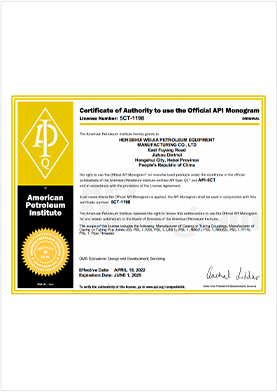- Afrikaans
- Albanian
- Amharic
- Arabic
- Armenian
- Azerbaijani
- Basque
- Belarusian
- Bengali
- Bosnian
- Bulgarian
- Catalan
- Cebuano
- Corsican
- Croatian
- Czech
- Danish
- Dutch
- English
- Esperanto
- Estonian
- Finnish
- French
- Frisian
- Galician
- Georgian
- German
- Greek
- Gujarati
- Haitian Creole
- hausa
- hawaiian
- Hebrew
- Hindi
- Miao
- Hungarian
- Icelandic
- igbo
- Indonesian
- irish
- Italian
- Japanese
- Javanese
- Kannada
- kazakh
- Khmer
- Rwandese
- Korean
- Kurdish
- Kyrgyz
- Lao
- Latin
- Latvian
- Lithuanian
- Luxembourgish
- Macedonian
- Malgashi
- Malay
- Malayalam
- Maltese
- Maori
- Marathi
- Mongolian
- Myanmar
- Nepali
- Norwegian
- Norwegian
- Occitan
- Pashto
- Persian
- Polish
- Portuguese
- Punjabi
- Romanian
- Russian
- Samoan
- Scottish Gaelic
- Serbian
- Sesotho
- Shona
- Sindhi
- Sinhala
- Slovak
- Slovenian
- Somali
- Spanish
- Sundanese
- Swahili
- Swedish
- Tagalog
- Tajik
- Tamil
- Tatar
- Telugu
- Thai
- Turkish
- Turkmen
- Ukrainian
- Urdu
- Uighur
- Uzbek
- Vietnamese
- Welsh
- Bantu
- Yiddish
- Yoruba
- Zulu
Understanding Bull Plug Pressure Ratings for Enhanced Safety and Performance
Understanding Bull Plug Pressure Rating An Essential Aspect in Fluid Control Systems
In the world of fluid control systems, the concept of pressure rating is crucial for ensuring the safety and efficiency of operations. Among various components, the bull plug, which is commonly used in pipelines and pressure vessels, holds a significant place. It is essential to understand what bull plug pressure rating entails, and why it is a critical parameter in engineering applications.
What is a Bull Plug?
A bull plug is a type of closure fitting used to seal the end of a pipe or a valve. Typically, it is constructed from materials such as carbon steel, stainless steel, or other corrosion-resistant alloys, making it suitable for different fluid environments. Bull plugs can be utilized in a wide range of applications, including oil and gas operations, water supply systems, and chemical processing.
Importance of Pressure Rating
The pressure rating of a bull plug refers to the maximum pressure the component can withstand without failing. It is expressed in units such as pounds per square inch (psi) or bar. This rating is integral to the design and operation of fluid systems, as it directly relates to safety and performance. A properly rated bull plug will prevent leaks, ruptures, and catastrophic failures that could lead to environmental hazards or loss of product.
Factors Influencing Pressure Rating
Several factors play a role in determining the pressure rating of a bull plug
1. Material The material used in manufacturing the bull plug significantly affects its pressure rating. Higher-grade alloys may provide better strength and resistance to high pressures.
2. Design Standards Bull plugs must adhere to various industry standards and codes, such as ASME, ASTM, or API, which specify the required testing and manufacturing processes that ensure reliability under pressure.
bull plug pressure rating

3. Temperature The operating temperature of the fluid within the system can alter the material properties of the bull plug. Higher temperatures can reduce the strength of materials, necessitating a lower pressure rating.
4. Thread Type Bull plugs can come with different threading types (NPT, BSP, etc.), which can impact the sealing integrity and overall pressure tolerance. Proper threading ensures that the plug can securely fit within the pipe or valve.
Testing and Certification
To ensure that bull plugs meet their designated pressure ratings, they undergo rigorous testing. Hydrostatic testing is one common method, where the component is subjected to a high-pressure fluid to check for leaks or material failures. Certification from recognized bodies also assures users of compliance with safety standards, which is crucial in high-stakes environments such as oil drilling or chemical manufacturing.
Best Practices for Selection and Use
When selecting a bull plug for a specific application, it is essential to
- Assess the expected pressure and temperature conditions. - Choose a bull plug with a suitable pressure rating that exceeds the maximum anticipated pressure. - Consider the compatibility of the bull plug material with the fluid type to prevent corrosion. - Follow guidelines for installation to ensure a tight seal and maintain pressure integrity.
Conclusion
In summary, the pressure rating of a bull plug is a vital specification that guarantees the safety and reliability of fluid control systems. By understanding the factors that influence this rating and adhering to best practices for selection and installation, engineers and technicians can effectively mitigate risks associated with pressure systems. Investing in properly rated and tested components like bull plugs not only ensures compliance with industry standards but also enhances the longevity and efficiency of the entire fluid transport system.
-
Tubing Pup Joints: Essential Components for Oil and Gas OperationsNewsJul.10,2025
-
Pup Joints: Essential Components for Reliable Drilling OperationsNewsJul.10,2025
-
Pipe Couplings: Connecting Your World EfficientlyNewsJul.10,2025
-
Mastering Oilfield Operations with Quality Tubing and CasingNewsJul.10,2025
-
High-Quality Casing Couplings for Every NeedNewsJul.10,2025
-
Boost Your Drilling Efficiency with Premium Crossover Tools & Seating NipplesNewsJul.10,2025







